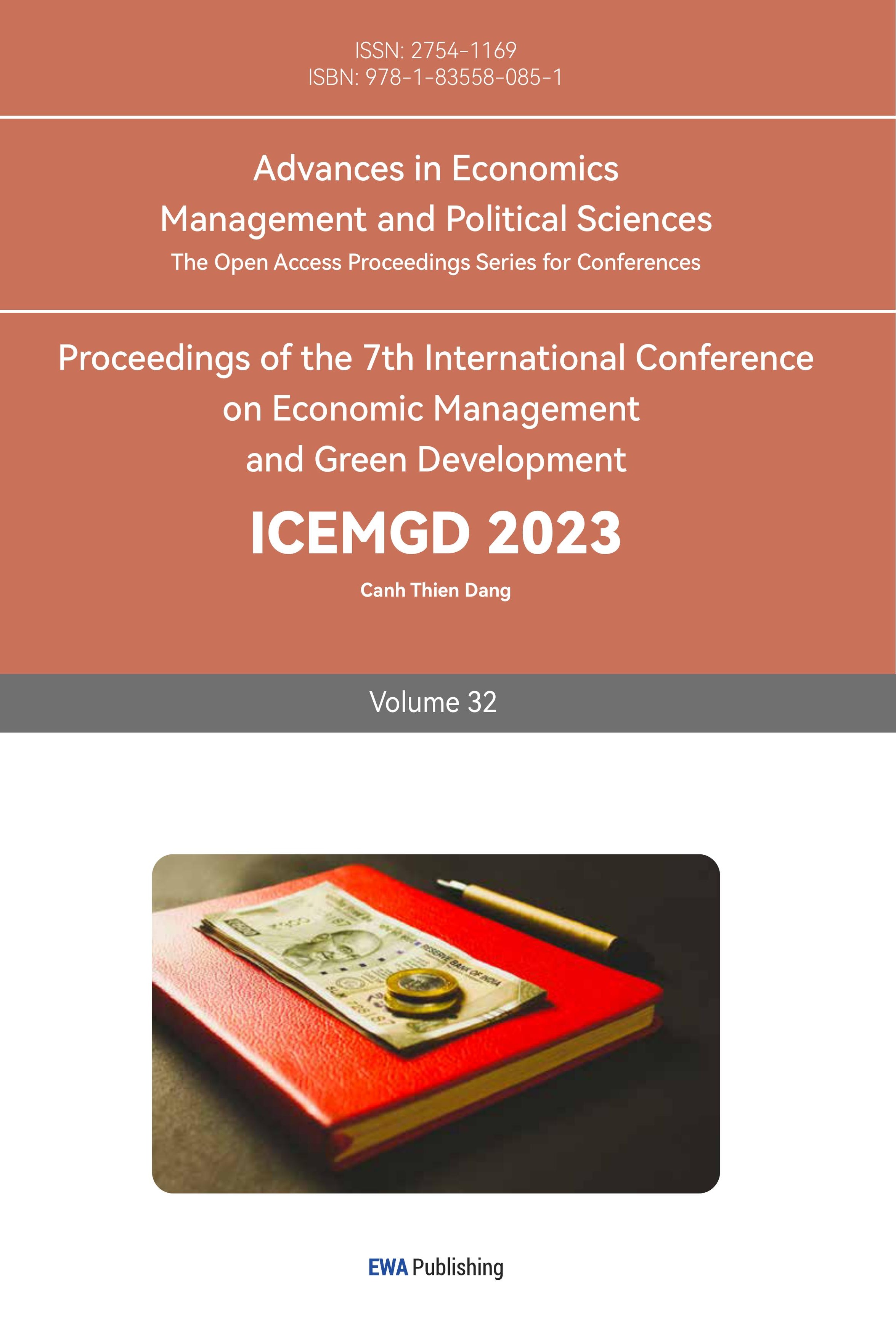References
[1]. Soni, G., Kumar, S., Mahto, R. V., Mangla, S. K., Mittal, M. L., Lim, W. M.: A decision-making framework for Industry 4.0 technology implementation: The case of FinTech and sustainable supply chain finance for SMEs. Technological Forecasting and Social Change 180, 121686 (2022).
[2]. Thathsarani, U. S., Jianguo, W.: Do Digital Finance and the Technology Acceptance Model Strengthen Financial Inclusion and SME Performance. Information 13(8), 390 (2022).
[3]. Nakamoto, S.: Bitcoin: A peer-to-peer electronic cash system. Decentralized business review, 21260 (2008).
[4]. Mahjoub, Y. I., Hassoun, M., Trentesaux, D.: Blockchain adoption for SMEs: opportunities and challenges. IFAC-PapersOnLine 55(10), 1834-1839 (2022).
[5]. Köcher, A., Heesch, R., Widulle, N., Nordhausen, A., Putzke, J., Windmann, A., Niggemann, O.: A Research Agenda for AI Planning in the Field of Flexible Production Systems. In 2022 IEEE 5th International Conference on Industrial Cyber-Physical Systems (ICPS) (pp. 1-8). IEEE (2022).
[6]. Mezgár, I., Váncza, J.: From ethics to standards–A path via responsible AI to cyber-physical production systems. Annual Reviews in Control (2022).
[7]. Sharma, N., Chauhan, N., Chand, N.: Cluster Based Distributed Service Discovery in Internet of Vehicles. Journal of Communications Software and Systems 17(3), 281-288 (2021).
[8]. Xie, X., Yang, Y., Gu, J., Zhou, Z.: Research on the contagion effect of associated credit risk in supply chain based on dual-channel financing mechanism. Environmental Research, 184, 109356 (2020).
[9]. Wang, R., Yu, C., Wang, J.: Construction of supply chain financial risk management mode based on Internet of Things. IEEE Access, 7, 110323-110332 (2019).
Cite this article
Kong,D. (2023). Technology Innovation, Financing Risk and Control in Small and Medium-Sized Enterprises Supply Chain. Advances in Economics, Management and Political Sciences,32,187-190.
Data availability
The datasets used and/or analyzed during the current study will be available from the authors upon reasonable request.
Disclaimer/Publisher's Note
The statements, opinions and data contained in all publications are solely those of the individual author(s) and contributor(s) and not of EWA Publishing and/or the editor(s). EWA Publishing and/or the editor(s) disclaim responsibility for any injury to people or property resulting from any ideas, methods, instructions or products referred to in the content.
About volume
Volume title: Proceedings of the 7th International Conference on Economic Management and Green Development
© 2024 by the author(s). Licensee EWA Publishing, Oxford, UK. This article is an open access article distributed under the terms and
conditions of the Creative Commons Attribution (CC BY) license. Authors who
publish this series agree to the following terms:
1. Authors retain copyright and grant the series right of first publication with the work simultaneously licensed under a Creative Commons
Attribution License that allows others to share the work with an acknowledgment of the work's authorship and initial publication in this
series.
2. Authors are able to enter into separate, additional contractual arrangements for the non-exclusive distribution of the series's published
version of the work (e.g., post it to an institutional repository or publish it in a book), with an acknowledgment of its initial
publication in this series.
3. Authors are permitted and encouraged to post their work online (e.g., in institutional repositories or on their website) prior to and
during the submission process, as it can lead to productive exchanges, as well as earlier and greater citation of published work (See
Open access policy for details).
References
[1]. Soni, G., Kumar, S., Mahto, R. V., Mangla, S. K., Mittal, M. L., Lim, W. M.: A decision-making framework for Industry 4.0 technology implementation: The case of FinTech and sustainable supply chain finance for SMEs. Technological Forecasting and Social Change 180, 121686 (2022).
[2]. Thathsarani, U. S., Jianguo, W.: Do Digital Finance and the Technology Acceptance Model Strengthen Financial Inclusion and SME Performance. Information 13(8), 390 (2022).
[3]. Nakamoto, S.: Bitcoin: A peer-to-peer electronic cash system. Decentralized business review, 21260 (2008).
[4]. Mahjoub, Y. I., Hassoun, M., Trentesaux, D.: Blockchain adoption for SMEs: opportunities and challenges. IFAC-PapersOnLine 55(10), 1834-1839 (2022).
[5]. Köcher, A., Heesch, R., Widulle, N., Nordhausen, A., Putzke, J., Windmann, A., Niggemann, O.: A Research Agenda for AI Planning in the Field of Flexible Production Systems. In 2022 IEEE 5th International Conference on Industrial Cyber-Physical Systems (ICPS) (pp. 1-8). IEEE (2022).
[6]. Mezgár, I., Váncza, J.: From ethics to standards–A path via responsible AI to cyber-physical production systems. Annual Reviews in Control (2022).
[7]. Sharma, N., Chauhan, N., Chand, N.: Cluster Based Distributed Service Discovery in Internet of Vehicles. Journal of Communications Software and Systems 17(3), 281-288 (2021).
[8]. Xie, X., Yang, Y., Gu, J., Zhou, Z.: Research on the contagion effect of associated credit risk in supply chain based on dual-channel financing mechanism. Environmental Research, 184, 109356 (2020).
[9]. Wang, R., Yu, C., Wang, J.: Construction of supply chain financial risk management mode based on Internet of Things. IEEE Access, 7, 110323-110332 (2019).









